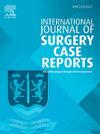Golden time of odontoma removal related to tooth movement disturbance in orthodontic patients: A series of five cases
IF 0.6
Q4 SURGERY
引用次数: 0
Abstract
Introduction
Odontomas are the most common odontogenic tumors. They can significantly impact dental development, potentially causing tooth impaction or delaying tooth eruption and disturbances in tooth movement, presenting unique challenges in orthodontic treatment. This case series report discusses the complexity and golden time of surgery as management strategies of compound odontomas affecting orthodontic treatment in five cases.
Case series
We retrospectively reviewed five patients diagnosed with compound odontomas. Patients complained of their missing canines, mainly on the upper, and in some cases, on the lower jaw. There was no subjective pain, and only one patient complained of gingival swelling on his left maxilla with no changes in size.
Discussion
Radiograph revealed all of the tumors before orthodontic treatment. CBCT is appropriate to use for surgical approach, and it minimizes complication. An OPG is less costly compared to CBCT. Odontomas were treated by surgical removal because the tumor blocked the pathway of tooth eruption and medialized or distalized teeth. Removal of an odontoma before orthodontic insertion is highly recommended, and the need for surgical removal during the orthodontic treatment may depend on its location. Orthodontic treatment post-surgery achieved functional and aesthetic outcomes.
Conclusion
The multidisciplinary approach involving surgical and orthodontic interventions is critical in managing compound odontomas, emphasizing the necessity for individualized treatment strategies. The golden time of surgical removal of an odontoma is key to the successful treatment of tooth movement to be aligned.
求助全文
约1分钟内获得全文
求助全文
来源期刊
CiteScore
1.10
自引率
0.00%
发文量
1116
审稿时长
46 days

 求助内容:
求助内容: 应助结果提醒方式:
应助结果提醒方式:


